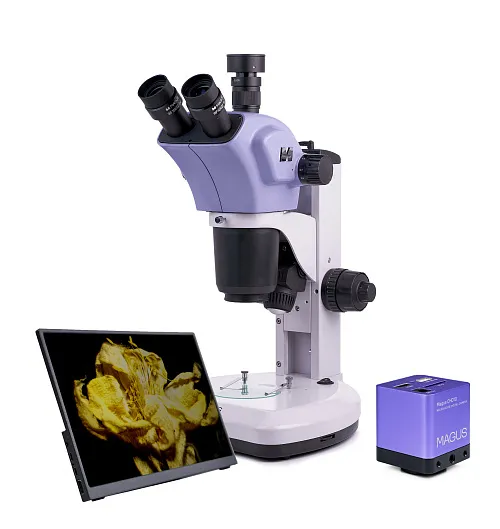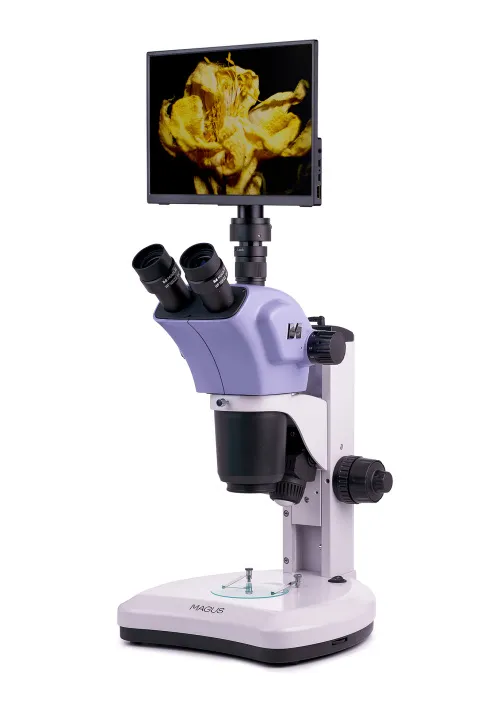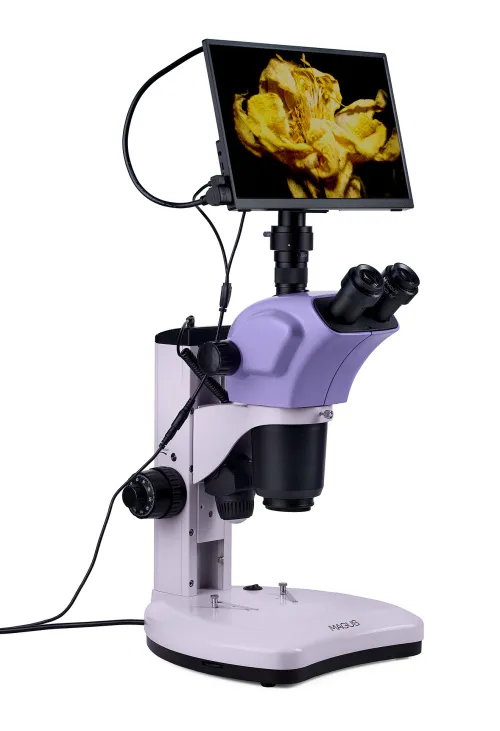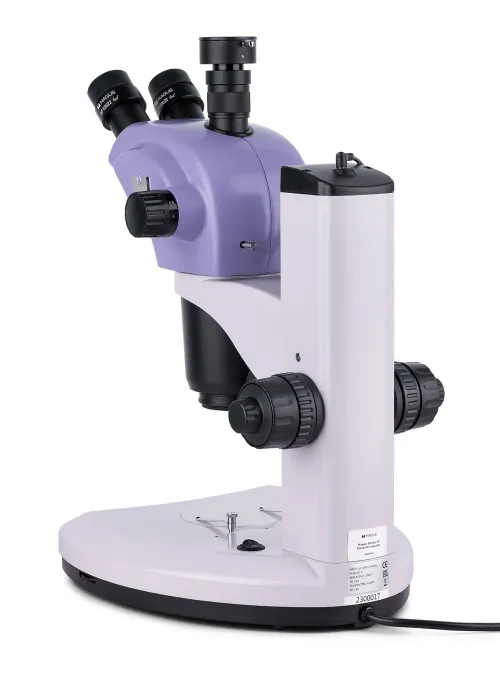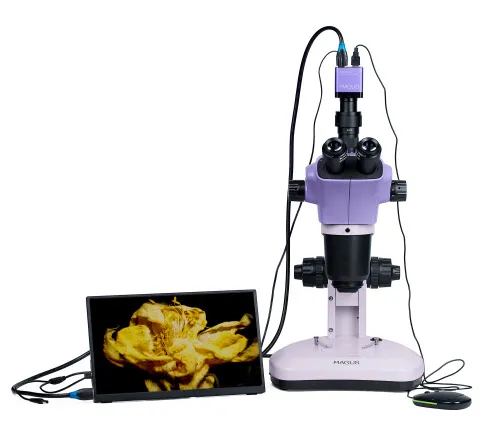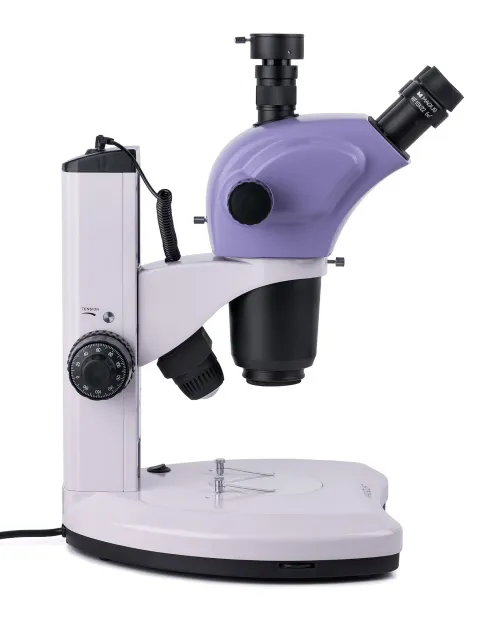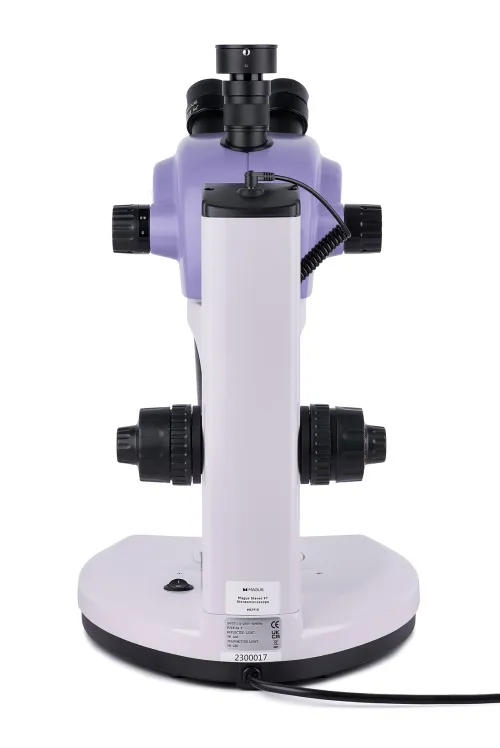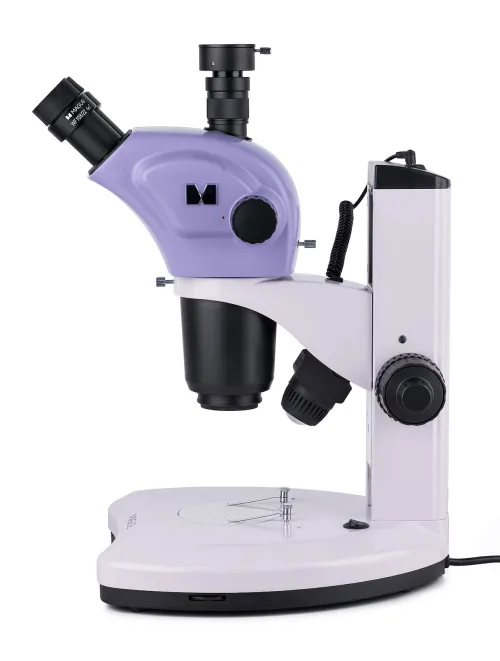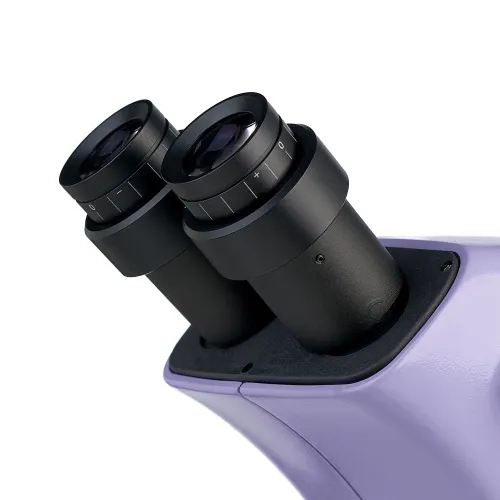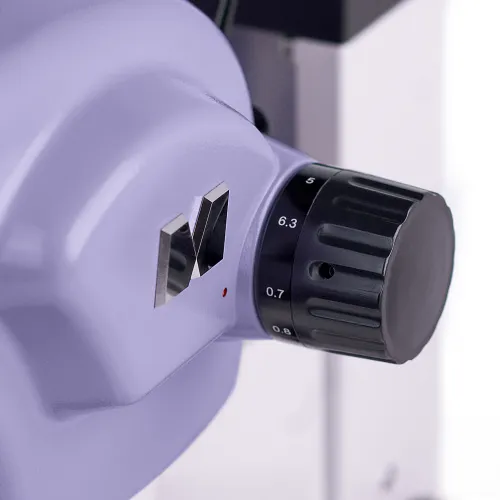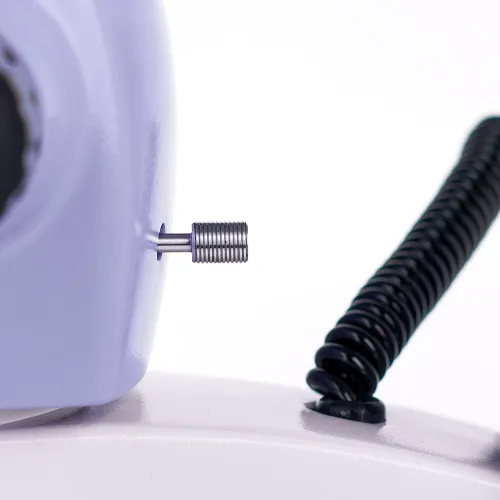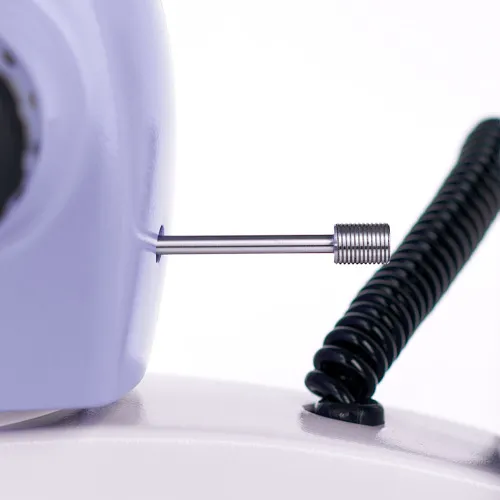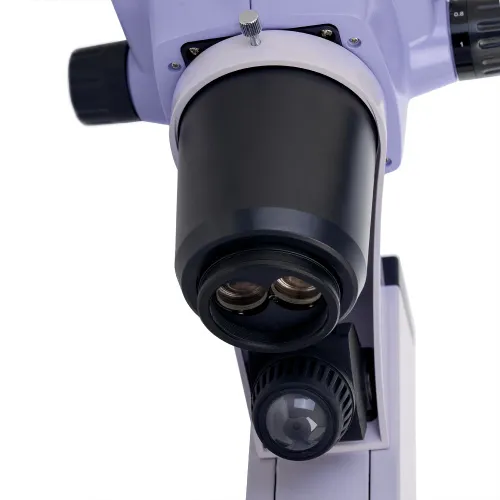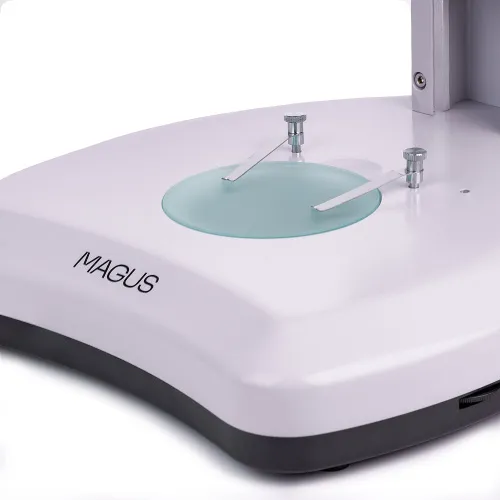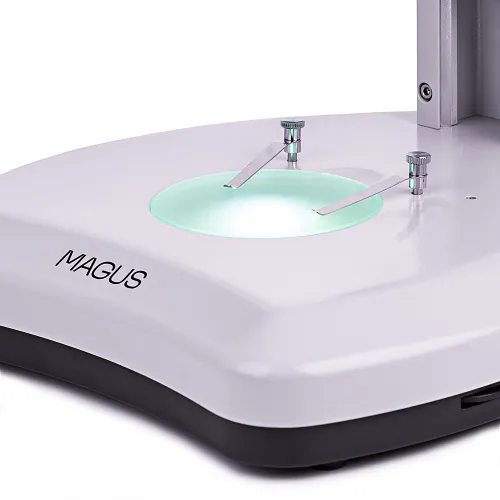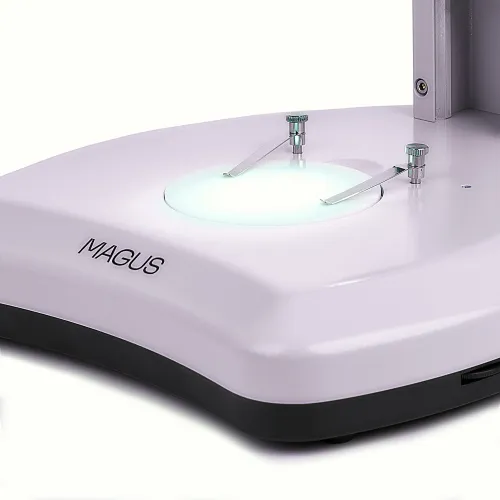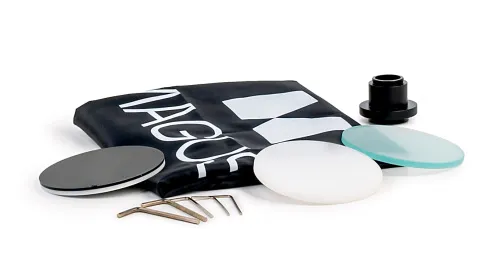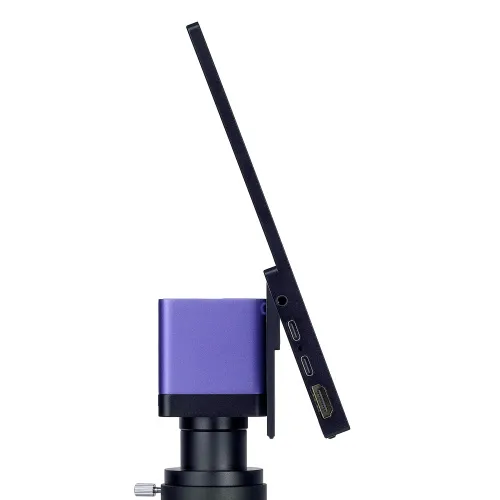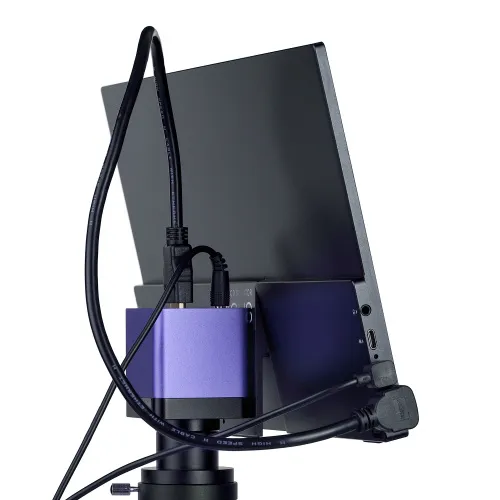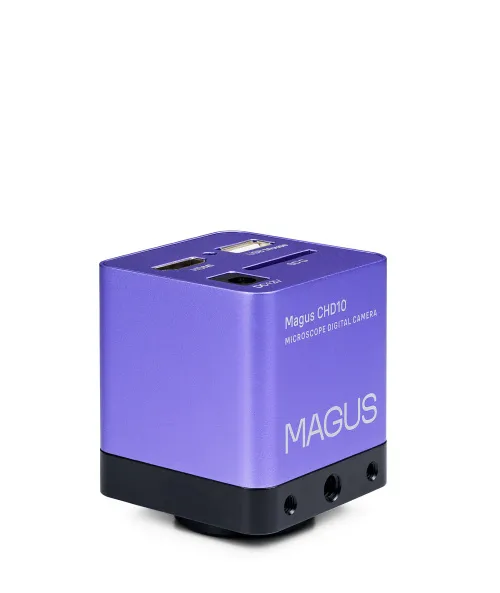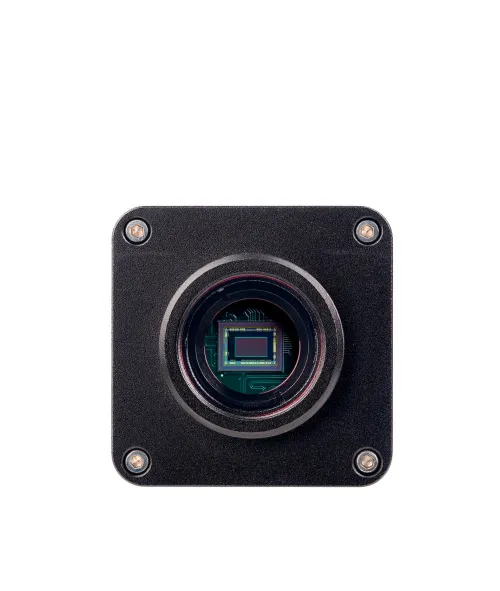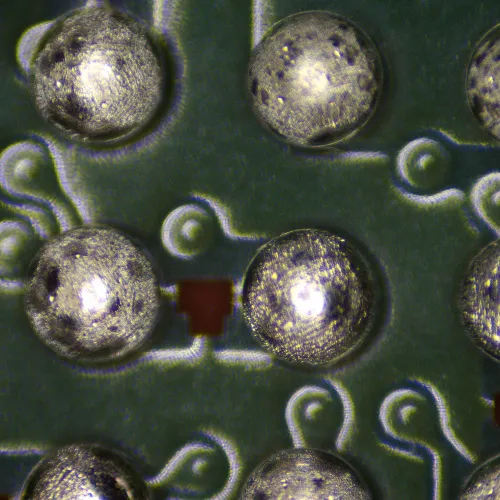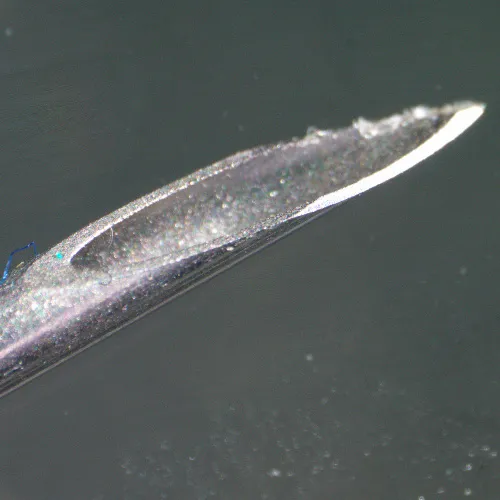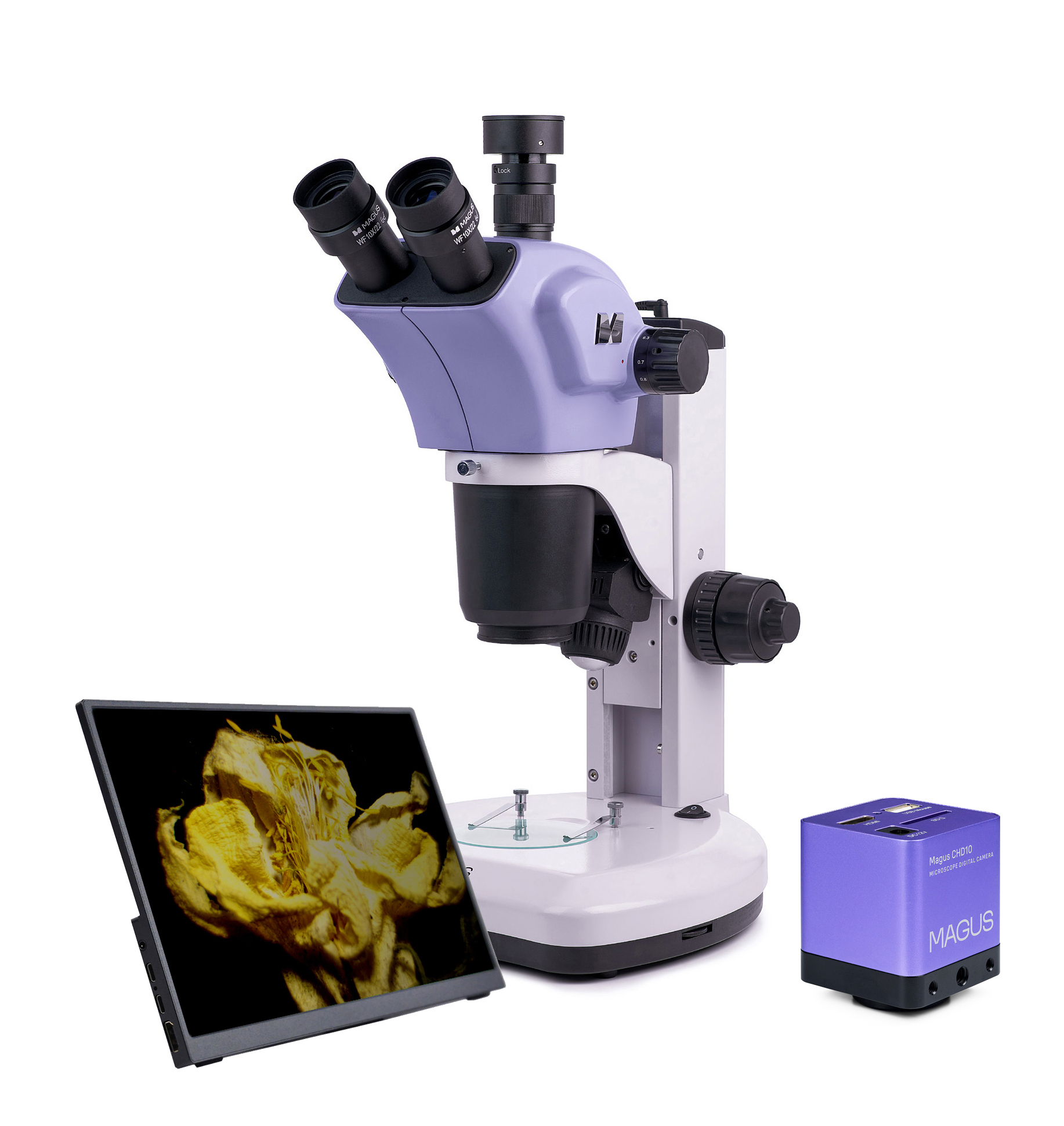MAGUS Stereo D9T LCD Digital Stereomicroscope
With a camera and monitor. Magnification: 7–63x. The Greenough optical design. Trinocular head, LED transmitted light illuminator 5W, LED reflected light oblique illuminator 3W
| Product ID | 83045 |
| Brand | MAGUS |
| Warranty | 5 years |
| EAN | 5905555018584 |
| Package size (LxWxH) | 44x42x67 cm |
| Shipping Weight | 13.65 kg |
The MAGUS Stereo D9T LCD Stereomicroscope forms a non-inverted three-dimensional image and has a large working distance. You can examine samples but also conduct experiments with them. The Greenough optical scheme produces images that are sharp and three-dimensional which is essential for high-precision observations. The microscope is equipped with a zoom lens and two illuminators (transmitted and reflected light) and can be optionally upgraded with additional accessories. Excellent choice for restoration, soldering, modeling, machinery service repair, and quality control.
Digital camera
The digital HDMI-camera MAGUS CHD10 is equipped with a 2MP sensor and produces realistic Full HD images at a resolution of 1920x1080px. It is an autonomous camera that does not require connection to a computer or the installation of additional software. The camera can be connected directly to a TV, monitor, or projector to display an image. The HDMI interface provides a high and stable transfer rate from the camera to the external screen. Video is recorded at 60fps. The camera combines high FPS and high bandwidth HDMI. Therefore, videos are vivid, with no freezes or gaps between frames. At maximum resolution, the image is well-detailed, moving objects are visible without bugs, and object movement is displayed without delays.
Monitor
MAGUS MCD monitors work in combination with MAGUS CHD cameras to form a complete imaging system for MAGUS microscopes.
The connection to the camera occurs via its HDMI interface. The monitor displays real-time images. Its IPS LCD display has a wide viewing angle, high brightness, and good contrast. When looking at the screen even from a large angle, the image is not distorted. The screen size is 13.3''.
The monitor can be installed on a horizontal surface using a folding stand or mounted directly on a camera or tripod.
Optics
The microscope has a trinocular head with a trinocular tube for mounting a camera. A C-mount adapter is included, but a digital camera must be purchased separately. The trinocular head rotates 360°. The zoom objective combined with a 10x eyepiece provides magnification from 7x to 63x. Thanks to the zoom lens, the magnification changes without reducing the focus. If you use auxiliary objectives (not included), you can change the magnification range, working distance, and field of view of the microscope. With optional accessories, the magnification of the microscope can be increased up to 315x.
Illumination
The working area is lit by two LED illuminators: 5W transmitted light illuminator and 3W reflected light (oblique) illuminator. Both illuminators are AC powered, bright, do not change color temperature when adjusting brightness, and have a 50,000-hour life.
Stage and focusing mechanism
One of the included plates is installed on the stage: double-sided black and white, white, or transparent. The first plate is used for observing opaque objects and makes the image high contrast. Dark-colored samples are examined on the white side, while light-colored samples - on the black side. White and transparent plates are used when you are observing translucent and transparent samples and want to achieve maximum brightness and uniform illumination of the working area.
The microscope has a coarse and fine focusing mechanism. Fine focusing is used at magnifications above 40x. Coarse focusing has tension adjustment.
Accessories
To extend the microscope’s capabilities, use additional accessories such as eyepieces, auxiliary lenses, calibration slides, and digital cameras. It is also possible to install a device for polarized light observations.
*Key features of the microscope:
- Zoom objective with a zoom ratio of 9:1
- 360° rotation of the trinocular head, trinocular tube for photo and video shooting
- Greenough optical scheme, three-dimensional image with a large depth of field
- Transmitted and reflected (oblique) illumination, two durable LED illuminators
- Optional accessories to improve microscope performance
Key features of the camera:
- The camera operates autonomously without a connection to a PC or the installation of any software
- HDMI interface for high and stable data transfer rate
- The camera resolution is 1920x1080px – an ideal choice for displaying images on a Full HD monitor
- 60 fps for observing moving samples, recording video, and moving the sample without jerkiness or delays
- SONY Starvis color CMOS backlit sensor provides low noise level and high light sensitivity even in low-light conditions. You will get clearer, brighter, and more color-saturated images
- Software with photo, video recording, editing, external display, linear and angular measurements
The kit includes:
- MAGUS CHD10 Digital Camera (digital camera, HDMI cable (1.5m), USB mouse, 32GB SD memory card, AC power adapter 12V/1A (Euro), user manual and warranty card)
- MAGUS MCD20 LCD Monitor
- Base with integrated transmitted light source and power supply unit
- Stand with focusing mechanism
- Trinocular head
- Eyepiece 10x/22 mm (2 pcs.)
- Black-and-white stage plate
- White plate
- Transparent plate
- Reflected light oblique illuminator
- C-mount adapter
- AC power cord
- Dust cover
- User manual and warranty card
Available on request:
- 15x/15mm eyepiece (2 pcs.)
- 16x/15mm eyepiece (2 pcs.)
- 20x/12mm eyepiece (2 pcs.)
- 25x/9mm eyepiece (2 pcs.)
- Auxiliary objective 0.5x
- Auxiliary objective 2x
- Reflected ring light illuminator
- Polarization device
- Calibration slide
| Product ID | 83045 |
| Brand | MAGUS |
| Warranty | 5 years |
| EAN | 5905555018584 |
| Package size (LxWxH) | 44x42x67 cm |
| Shipping Weight | 13.65 kg |
| Type | digital, stereo/instrumental |
| Microscope head type | trinocular, digital screen/PC monitor |
| Head | 360 ° rotatable |
| Head inclination angle | 45 ° |
| Magnification, x | 7 — 63 |
| Magnification, x (optional) | 3.5–315 |
| Zoom ratio | 9:1 |
| Eyepiece tube diameter, mm | 30 |
| Eyepieces | 10x/22mm, long eye relief (*optional: 15x/15mm, 16x/15mm, 20x/12mm, 25x/9mm) |
| Objectives | 0.7–6.3x (*optional: with 0.5x auxiliary objective: 0.35–3.15x; with 2x auxiliary objective: 1.4–12.6x) |
| Working distance, mm | 110 (with 0.5x auxiliary objective: 188; with 2x auxiliary objective: 40.4) |
| Interpupillary distance, mm | 53 — 75 |
| Field of view, mm | 31.43–3.49 (with 0.5x auxiliary objective: 62.85–6.98; with 2x auxiliary objective: 15.71–1.745), with a 10x eyepiece |
| Stage, mm | Ø90 |
| Stage features | black/white plate, transparent plate, white plate |
| Eyepiece diopter adjustment, diopters | ±5D on each eyepiece |
| Focus | coaxial, coarse (83mm, with coarse focusing tension adjustment) and fine (0.002mm) |
| Illumination | LED |
| Brightness adjustment | ✓ |
| Power supply | 220V/50Hz, AC network |
| Light source type | reflected light: oblique illuminator – 3W LED; transmitted light: 5W LED |
| Ability to connect additional equipment | polarization device |
| User level | experienced users, professionals |
| Assembly and installation difficulty level | complicated |
| Optical scheme | Greenough |
| Application | for applied research |
| Illumination location | dual |
| Research method | bright field |
| Pouch/case/bag in set | dust cover |
| Weight, kg | 8 |
| Dimensions, mm | 280x463x335 |
| Camera specifications | |
| Sensor | SONY Starvis CMOS |
| Color/monochrome | color |
| Megapixels | 2 |
| Maximum resolution, pix | 1920x1080 |
| Sensor size | 1/2.8" (5.57x3.13mm) |
| Pixel size, μm | 2.9x2.9 |
| Interface connectors | HDMI 1.4 |
| Memory card | SD up to 32GB |
| Ability to connect additional equipment | USB mouse |
| Light sensitivity | 1300mV at 1/30s |
| Exposure time | 0.04ms–1000ms |
| Video recording | ✓ |
| Frame rate, fps at resolution | 60@1920x1080 (HDMI) |
| Place of installation | trinocular tube, eyepiece tube instead of an eyepiece |
| Image format | *.jpg |
| Video format | *.h264/*.h265, *.mp4 |
| Spectral range, nm | 380–650 (built-in IR filter) |
| Shutter type | ERS (electronic rolling shutter) |
| Software | HDMI: built-in |
| System requirements | does not require a computer connection |
| Mount type | C-mount |
| Body | solid aluminum |
| Camera power supply | AC adapter 12V, 1A |
| Specifications of the AC power adapter | input: AC voltage 100–240V, 50/60Hz, output: DC voltage 12V/1A |
| Camera operating temperature range, °С | -10...+50 |
| Operating humidity range, % | 30 — 80 |
| Monitor specifications | |
| Type of matrix | IPS |
| Display diagonal, inch | 13.3 |
| Display resolution, px | 1920x1080 (Full HD) |
| Aspect ratio | 16:9 |
| Brightness, cd/m² | 400 |
| Number of displayed colors | 16.7 m |
| Contrast | 1000:1 |
| Horizontal/vertical viewing angle, ° | 178/178 |
| Size of the visible screen area (WxH), mm | 295x165 |
| Pixel pitch (WxH), mm | 0.154x0.154 |
| Frequency of optical source, Hz | 60 |
| Type of matrix backlight | LED |
| LED backlight lifetime, h | 50000 |
| Interface | HDMI |
| Operating temperature range, °C | -15...+55 |
| Operating humidity range, % | 10 — 90 |
| Power supply | AC 110–220V, DC 5–12V/1A (Type-C) |
| Power consumption, W | 12 (max.) |
and downloads
We have gathered answers to the most frequently asked questions to help you sort things out
Find out why studying eyes under a microscope is entertaining; how insects’ and arachnids’ eyes differ and what the best way is to observe such an interesting specimen
Read this review to learn how to observe human hair, what different hair looks like under a microscope and what magnification is required for observations
Learn what a numerical aperture is and how to choose a suitable objective lens for your microscope here
Learn what a spider looks like under microscope, when the best time is to take photos of it, how to study it properly at magnification and more interesting facts about observing insects and arachnids
This review for beginner explorers of the micro world introduces you to the optical, illuminating and mechanical parts of a microscope and their functions
Short article about Paramecium caudatum - a microorganism that is interesting to observe through any microscope

